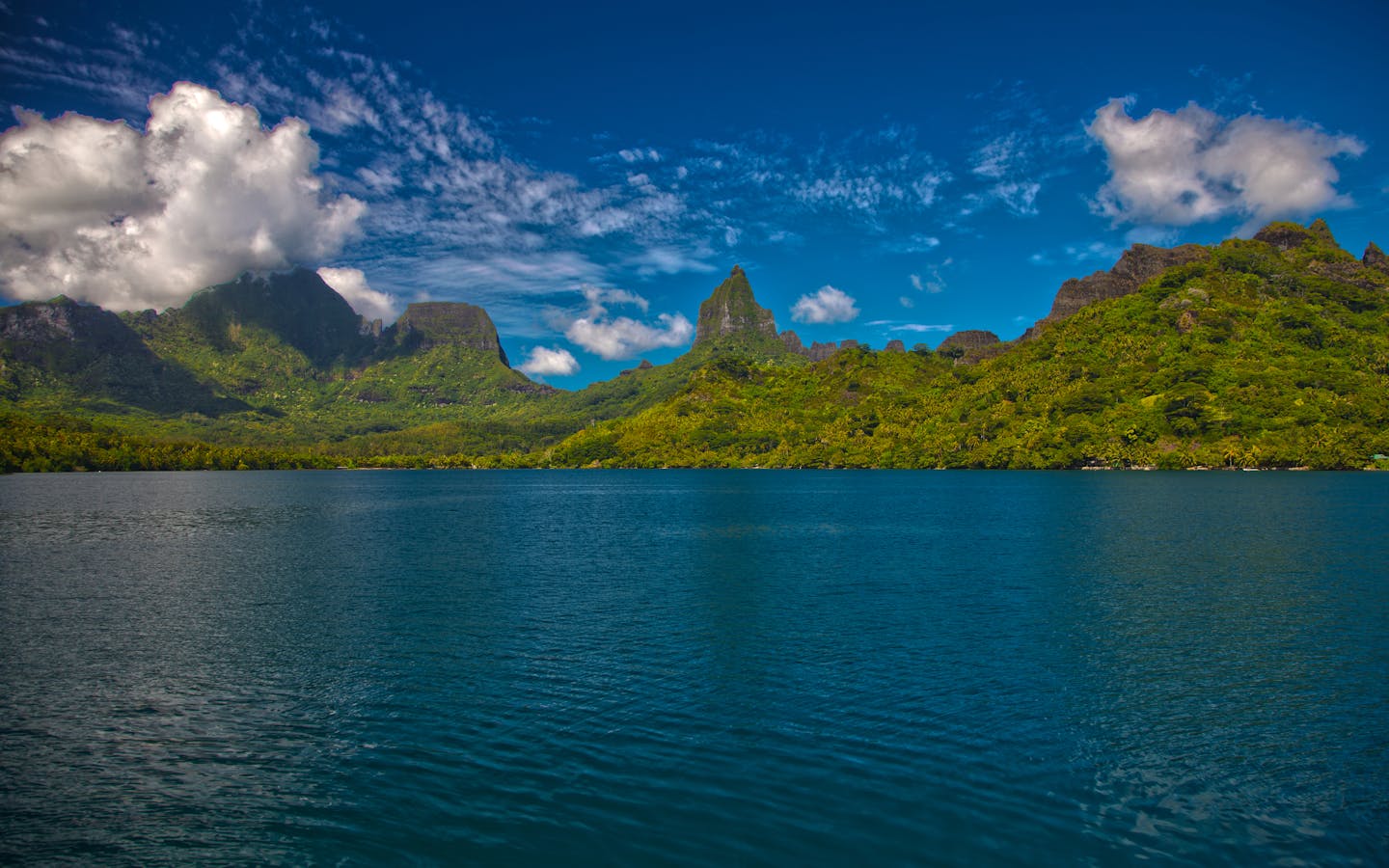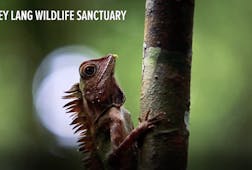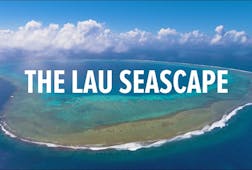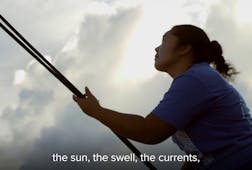Home to 4.3 billion people, Asia-Pacific's vast network of lands and seas stretches from the mountains of western China to the shores of Aotearoa New Zealand — and includes the largest, deepest ocean on Earth.
This region nurtures thousands of terrestrial and marine species and boasts a broad range of habitats — including rainforests, mangrove forests and coral reefs — that are critical in the fight against climate change. The Pacific Ocean covers more than 30 percent of the Earth’s surface and includes more marine species than any other ocean basin — providing nearly three-fourths of the world’s fish catch.
Yet the biodiversity of Asia-Pacific is under threat. That's why Conservation International works throughout the region to restore degraded habitats and protect at-risk species — helping communities thrive alongside nature in a more sustainable way.
Where we work

Threats
Asia has some of the world's highest rates of deforestation, habitat degradation, pollution and species extinction.
The Pacific Islands region comprises 10% of the world's oceans and is home to the world's largest tuna fisheries — nearly one-third of the tuna market. It suffers some of the highest rates of endemism and species loss.
Around 60% of the world's population growth is in Asia, where the number of people has tripled in the last 65 years.
Our focus
Conservation International's work in Asia-Pacific began in 1989 with a pledge to protect some three dozen of the Earth's biodiversity hotspots, including the Philippine archipelago and the Sundaland rainforests of Southeast Asia.
Since then, our focus in Asia-Pacific has expanded across the region to include other ocean and forest areas considered critical to human well-being. We help improve food security, support innovative financing for conservation projects and establish protected area networks that encompass essential ecosystems.
Today we have offices in 12 countries throughout Asia-Pacific, working closely with indigenous communities, local and national governments, and the private sector to protect the critical benefits that nature provides to humanity.
Our priorities
In order to avoid the worst effects of climate change, we must limit the world's warming to 1.5 degrees Celsius by 2030 — and nature can provide at least 30% of the solution. In Asia-Pacific, we're working to mitigate climate change by restoring carbon-storing ecosystems like mangrove forests in the Philippines and the primary forests that feed Southeast Asia's Mekong River.
How we stabilize our climate by protecting and restoring nature »
The world's oceans provide income and food, they help regulate our weather and absorb CO2 emissions — yet they are under threat. In Asia-Pacific, we've helped establish a network of marine protected areas — including the world's second-largest marine park in New Caledonia — which are essential to the region’s people, biodiversity and climate resilience.
We work with local communities throughout Asia-Pacific to improve livelihoods while easing the strain on natural resources — from training workers in more efficient fish processing methods in Cambodia to helping Philippine farmers replace harmful slash-and-burn practices. We are also focused on increasing local benefits to incentivize sustainable fisheries management.
International Blue Carbon Institute
Blue carbon is the carbon stored in coastal and marine ecosystems, such as mangroves, seagrasses and tidal marshes. These ecosystems sequester and store large quantities of carbon in plants and sediment and are an essential part of the solution to global climate change.

Southeast Asia holds over one-third of the world’s mangrove forests. However, the most significant loss of mangrove forests has occurred in this region. To support the region in realizing the immense potential of blue carbon, Conservation International has established the International Blue Carbon Institute, located in Singapore, in 2022.
The Institute provides practitioners, policymakers, and communities access to the latest scientific knowledge, standards, best practices, and resources on the immense potential of blue carbon. It will build capacities and drive understanding in the application of blue carbon to climate mitigation and adaptation.
Through collaboration with academic institutions, non-profit organizations, businesses and governments, the Institute is a global hub for the exchange of knowledge and expertise in blue carbon.
The work of the International Blue Carbon Institute is led by Dr. Emily Pidgeon, Ph. D., Vice President of Ocean Science and Innovation.
For more information on how to be involved with the International Blue Carbon Institute, please contact singapore@conservation.org.
On the ground
The government of West Papua has approved legislation establishing it as Indonesia’s first “conservation province” — a new global standard that puts sustainable development at the forefront of economic activity. Conservation International was instrumental in advising the provincial government on issuing the law, which protects some of the healthiest marine and terrestrial ecosystems on Earth. Learn more »
Conservation International has worked in the Pacific Islands for nearly 30 years, providing strategic and technical support for ocean conservation, climate change adaptation and mitigation, nature-based development and innovative financing for conservation. Our efforts have helped Pacific nations protect more than 4 million square kilometers of ocean. Learn more »
Conservation International is working with governments and communities to ensure the health of Southeast Asia's Mekong River, including working to protect the forests and wetlands that feed the system, minimize the impact of forest degradation, and improve management of fisheries. Learn more »
Since 1991, Conservation International has worked with communities and government agencies in Indonesia to secure a long-term vision that protects vital ecosystems and helps foster nature-based development.
Since 1995, Conservation International has worked to protect healthy ecosystems in the Philippines — from piloting the nation's first effort to monetize the “blue carbon” stored in its mangroves to driving innovative funding for mangrove restoration. We are working with insurance companies to incorporate the value of mangroves into their products through fees and carbon credits that support community-based conservation. Learn more about blue carbon »
As one of the youngest nations on Earth, Timor-Leste has a unique opportunity to forge innovative and sustainable development models based on nature. Our work aims to improve local food security, mitigate climate change and enhance livelihoods. On Atauro Island, we worked with communities to unify 12 marine protected areas into a single network, with the goal of strengthening conservation efforts and providing local benefits. Learn more »
If managed sustainably, manta rays can provide an economic lifeline to local communities across Asia-Pacific. We've worked throughout the region — leveraging innovative technology and partnerships with governments and stakeholders — to protect these creatures so they can continue to thrive.
Conservation news from Asia-Pacific
Press releases from Asia-Pacific
Our offices in Asia-Pacific
-
Australia (English)
© Christopher Schoenbohm -
China (English)
© Kyle Obermann -
Fiji (English)
© Chad McMillan -
Cambodia (English)
© Amir Jina -
Hong Kong (English)
© Adam Korzekwa -
Japan (日本語)
© Char -
New Caledonia (English)
© CI/Lily Clarke -
Pacific Islands (English)
© Marc Taquet -
Philippines (English)
© CI/Aya Uraguchi -
Samoa (English)
© CI/John Martin -
Singapore (English)
© Conservation International/photo by Christian Ching -
Timor-Leste (English)
© Paul Hilton for Conservation International

















